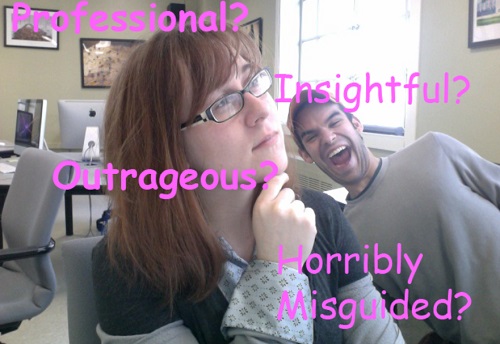You are here
Teaching Ethos with Selfies
Primary tabs

Personal Selfie
Students will be asked to think critically about the argumentative weight a visual picture of the author adds to a position. For homework, students will be instructed to construct a persona, capture it with a "selfie," and turn it in to the instructor. The instructor will compile all of the class selfies into a slideshow, distribute a worksheet of fake article titles, and ask students to "match" appropriate selfies to their articles. The ensuing discussion should clarify the purpose of effective ethos in an argument.
Technology with picture-taking capabilities for the students' homework assignment, projector for class exercise
Students will be aked to think critically about the argumentative weight a visual picture of the author adds to a position. For homework, students will be instructed to construct a persona, capture it with a "selfie," and turn it in to the instructor. The instructor will compile all of the class selfies into a slideshow, distribute a worksheet of fake article titles, and ask students to "match" appropriate selfies to their articles. The ensuing discussion should clarify the purpose of effective ethos in an argument.
Instruct students to construct a persona by brainstorming five to six traits. A persona might be brainy, social, kind-hearted, fashionable and sensitive, for example. For homework, ask students to "capture" this specific persona by embodying it and taking a "selfie." Students without camera phones or home computers with photo-taking capabiliies should be directed to campus technology resources. Students should be asked to think about how best to convey this particular persona using visual rhetoric. They should be conscious of the setting, costume, facial expression, photo quality, number of people in the shot, etc. Ask them to turn in this selfie to you.
Next, compile the class selfies into a slide show. Hand out a worksheet comprised of a number of fake article titles matching the number of selfies. The articles should cover a wide range of style and tone. For example, several of mine were: "Pollution? Not as Big an Issue as My Dating Life," "Toxic Ontology: The Risk-Benefit Factors of Factory Pollution Output," and "Together, We Can End Pollution." Go through the slideshow several times, asking students to match the selfie with the article that would most benefit from its ethos. Go through the results as a class. Ask students to explain their choices using visual rhetorical analysis. The ensuing discussion should clarify the importance of ethos to an argument.
Locate technology resources for students without camera phones or home computers with photo-taking capabilities. Decide beforehand how students should turn in their selfies: class blog, email, class Prezi, etc.
Before this assignment, students should be introduced to the concept of ethos. This exercise is a great way to emphasize the importance of ethos and demonstrate its efficacy in argumentation.
1) Homework: Describe a persona using five to six adjectives (generous, friendly, cruel, professional, fun-loving, etc.). Get creative--the more entertaining the persona, the more fun this assignment will be! Now it's time to embody this persona! Take a selfie capturing this character. Think about how best to convey the traits you identified: setting, photo style, costume, facial expression, number of people in the shot, quality of the shot, etc. Send the selfie to your instructor.
2) In-Class Exercise: Match the numbered selfie in the slide show to the article title you think that person would have written. We'll go through the slide show multiple times to let you see all the options.
3) In-Class Discussion: Why did you match the selfies with their respective articles? How are the selfies making statements about a person's character? Think about what each selfie declares about the character of the "author." How might those character traits contribute to and strengthen the argument being made in the article?
I used this assignment in Rhetoric 306, an introduction to rhetoric course.
-

- Log in to post comments

